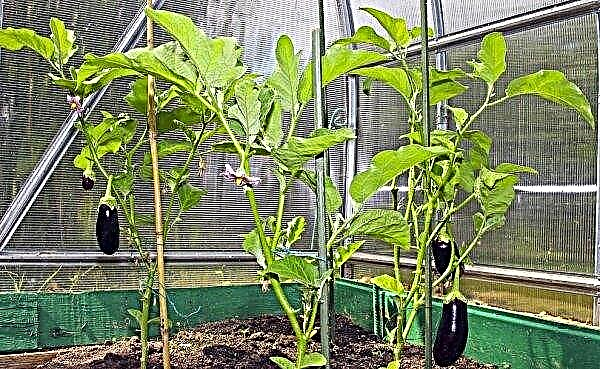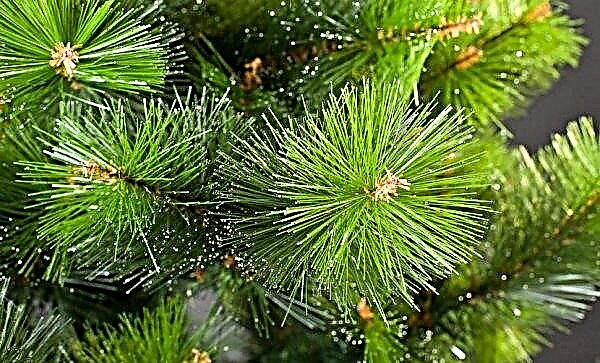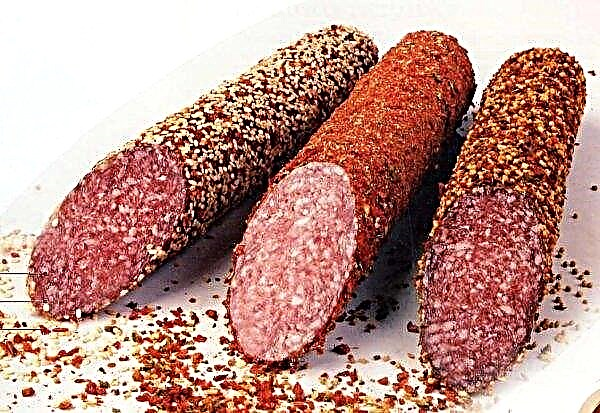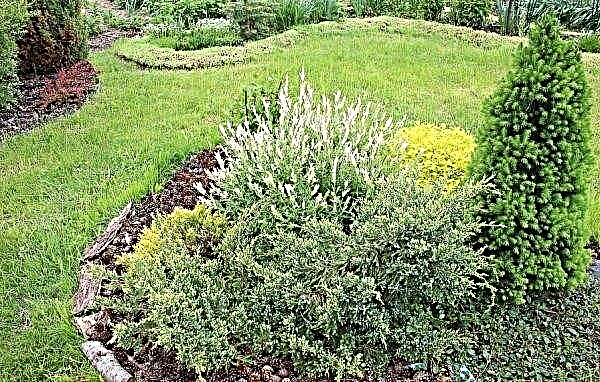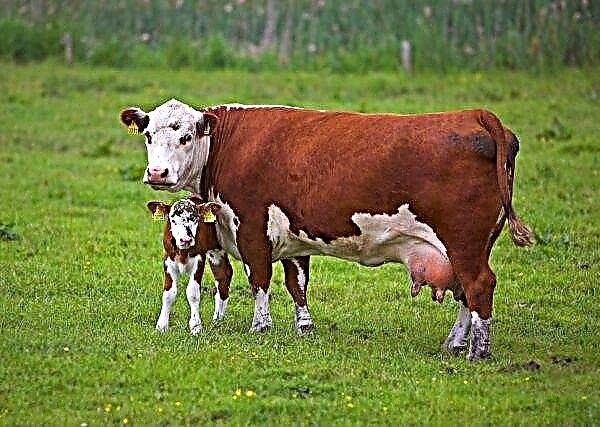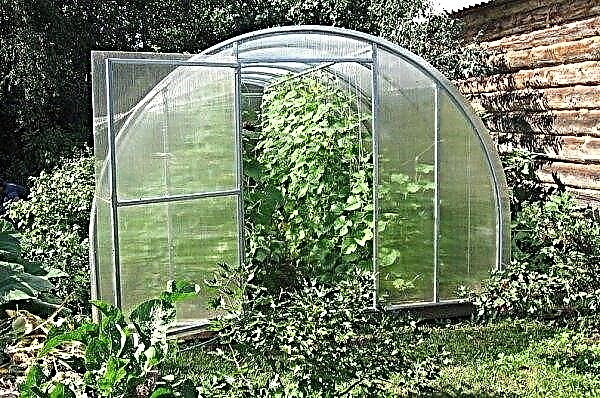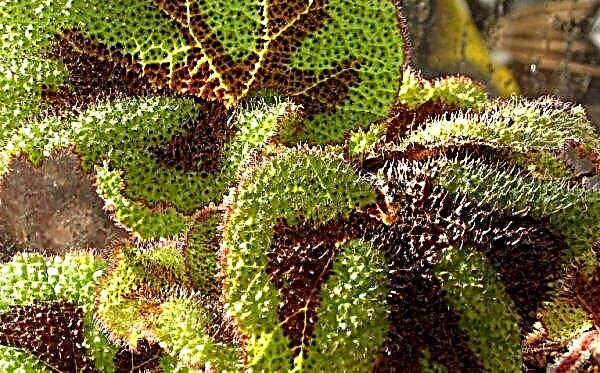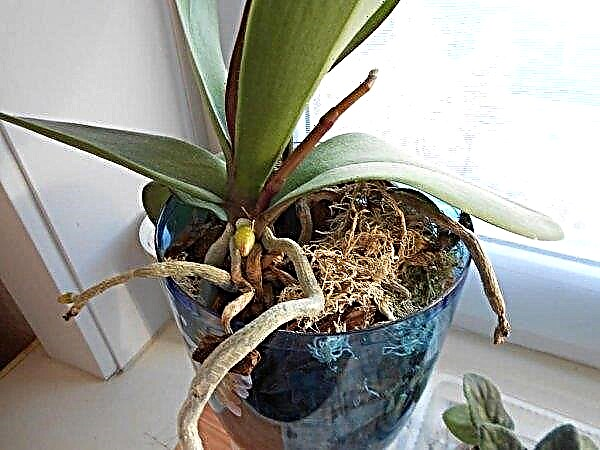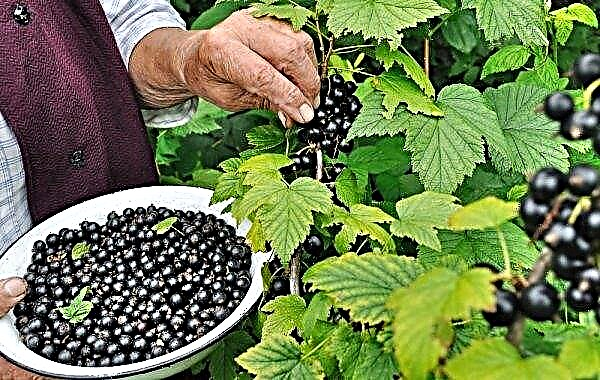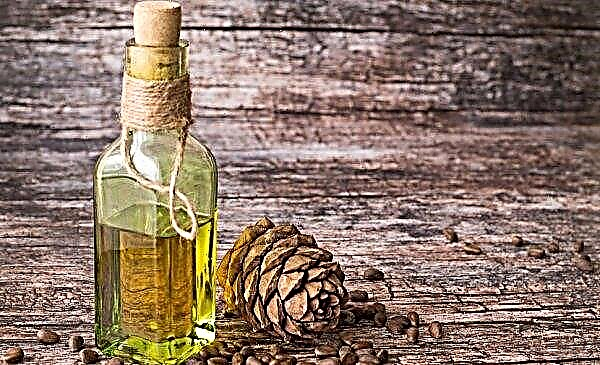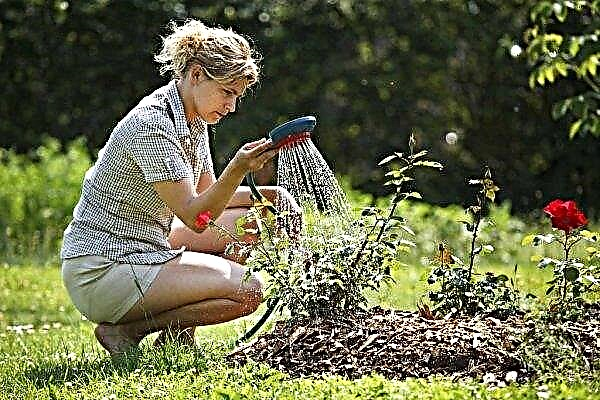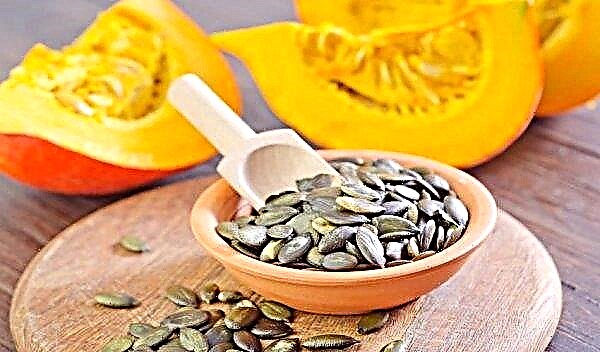To the question: are there watermelon feeds, many experienced farmers will answer in the affirmative, because often they grow this species as livestock feed. This gourd has beneficial properties and is widely used in animal husbandry as a feed additive. The article will tell you what fodder watermelon looks like, whether it has differences from table varieties, and also introduces the characteristics, agrotechnics of fodder watermelon cultivation and its use for feeding in animal husbandry.
Description and characteristics of feed watermelon
The cultivation of feed watermelons, as well as other melons, is of great importance for the creation of feed reserves in animal husbandry. The most common variety of fodder watermelon is the Dishim variety, which was bred in 1956 by the Donskoy Agricultural Institute and included in the State Register of the Russian Federation in 2006.  The originator is Volgogradsortsemovoshch OJSC. Zones of cultivation - Volga region, Caucasus, Central Black Earth region and Primorsky Territory.
The originator is Volgogradsortsemovoshch OJSC. Zones of cultivation - Volga region, Caucasus, Central Black Earth region and Primorsky Territory.
Feed watermelon has the following botanical characteristics:
- the root system is rod, powerful and highly branched, the central root goes to a depth of 3-5 m;
- the surface system of the lateral and adnexal roots is formed from lash nodes and is located at a depth of 40-60 cm from the surface;
- stalk lianiform, creeping, up to 5 m long with lateral (up to 7–10) branches, pentahedral and pubescent;
- green leaves, roughly pubescent, lobules strongly dissected and falling one after another;
- flowers are heterosexual, yellow, cross-pollination;
- pedicels of male flowers longer than female;
- round or slightly cylindrical pumpkin weighing up to 7–10 kg;
- seeds are large, without a scar, weight 1000 pieces - 130 g or more;
- the crust is thick, green, with white blurry stripes and strokes.
Did you know? In the wild in the Kalahari Desert, the wild ancestor of the modern watermelon grows - the colocint (or colocvint). Its fruits are bitter in taste, but for the abundance of water in the pulp, camels like to feast on them.
The culture has increased wind resistance due to the high branching, low windage of strongly dissected leaves and a large number of antennae. This allows the lashes not to twist and maintain a good water supply to the fruit. The fruits are distinguished by good keeping quality and can be stored for several months. Fodder watermelons are less demanding on growing conditions than table varieties - they tolerate heat and drought well and have high cold resistance, so they are sown first among gourds (along with corn crops). Culture refers to plants of short daylight hours.
Fodder watermelons are less demanding on growing conditions than table varieties - they tolerate heat and drought well and have high cold resistance, so they are sown first among gourds (along with corn crops). Culture refers to plants of short daylight hours.
Crop yield:
- on dry land (without watering) - 25-30 t / ha;
- on irrigated lands - up to 50-60 t / ha.
On fertilized soils and with a high level of agricultural technology, fodder watermelons yield more nutrients per unit area than herbs and grains, providing feed with carotene, iron, calcium and vitamins. The nutrients are digested by 85–90%.
Did you know? Candied mango, kiwi and pineapple made in China are not related to these fruits, but are made from the fruits of watermelon feed.
Chemical feed watermelons have:
- high pectin concentration - 0.4–0.8%;
- low amount of organic acids;
- starch - 0%;
- natural sugars - 1.1–2.6%;
- proteins - 0.8–1.1%;
- solids - 4%;
- water - 96%.

The high water content is provided by the water-holding ability of pectin, which increases as the fruit ripens.
How to distinguish a fodder watermelon from a table
To know how to distinguish fodder watermelon from a regular table, and what is the difference between these species, you need to compare their botanical characteristics.
The morphological structure and chemical composition of feed watermelon differs from table varieties in the following ways:
- the root system is more powerful and more developed;
- stems are longer and more climbing;
- shortened leaf segments are larger;
- the pulp is dense, light green or cream, almost white;
- the content of natural sugars is 2-3 times less;
- higher protein and pectin content.
What kind of animal feed watermelons are suitable
In livestock breeding, along with other crops, feed watermelons are also used as succulent feeds. The fruits go to the feed in a fresh, silo and frozen form and are a good milk product. Watermelon lashes go to the silo. Since they are poorly silted, they are mixed in a 1: 1 ratio with easily silted fruits.

You can evaluate the feed value of 1 kg of watermelon feed by the following indicators:
- feed units - 0.09 kg;
- digestible protein - 4 g;
- protein - 7 g;
- calcium - 0.33 g;
- phosphorus - 0.25 g.
Important! For 1 fodder unit, 1 kg of oats of medium quality is taken, which gives a gain of 150 g of fat in the body of cattle during fattening.
There is more carotene in watermelons than in root crops and potatoes, and carbohydrates are easily absorbed. To obtain 1 feed unit requires 11.1 kg of fruit. Feed watermelons contribute to a better digestion of coarse and concentrated feeds, they are included in the diet of pigs, both fresh and in silage. High sugar content in watermelons improves the taste and quality of meat and fat. Before feeding, fresh watermelons are crushed on vegetable cutters.

For cows and goats, the fruits are added to roughage and concentrates as a succulent feed. Such supplements are a good milk-milk and vitamin remedy, improve appetite and contribute to better absorption of the entire diet. For dairy breeds, this is especially important in the first days after calving when dividing.
If in the summer period the basis of the diet of rabbits and nutria is green fodder, in winter fodder watermelons will become an excellent supply of juicy animal feed. In nursing individuals, the use of watermelons increases the quality and quantity of milk.
Fodder watermelon is readily eaten by poultry in a fresh and silage form. But there is a norm - 20-30 g of watermelon per 1 bird per day.
Important! Watermelon seeds, which are 50% oil, are very useful for laying hens.
Growing Features
The agrotechnics of growing a crop for fodder is almost the same as growing food table varieties. In Russia, it is cultivated in the steppe zone.
Sowing seeds in open ground
Seeds of ripened fruits with a germination rate of 90% are suitable for sowing. Seeds must be warmed up before sowing and treated with fungicides ("Derozal", "Abacus"). If the soil is quite moist, then in warm weather, sowing can be done with germinated (2%) seeds. This will ensure germination in 10 days, while sowing with non-sprouted dry seeds gives seedlings only after 2-3 weeks.

Seeds germinate at a temperature of + 15 ... + 17 ° C, and for the further development of plants, a temperature of + 22 ... + 30 ° C is required. The risk of return frosts should be taken into account and this time should be excluded from the sowing dates, since even small frosts can destroy seedlings. The consumption rate of seeds is 3-5 kg per 1 ha.
The timing
You can determine the sowing time by the degree of soil warming at a depth of 10 cm:
- up to + 10 ° С - for early ripening varieties;
- up to + 12 ° С - for mid-season;
- up to + 14 ° C - for the later.
Seeds should not be planted earlier than these dates, because low temperatures delay seedlings and weak plants germinate. But the delay in sowing leads to a decrease in overall productivity. In the middle lane, plants are usually sown in the first decade of May, in the Altai Territory and Primorye in the second.
Seat selection and crop rotation
High yields are sown on virgin and fallow lands, on river floodplains, on well-structured sandy and fertile soils. The place should be weeded from weeds and not be located in a lowland where stagnation of water is possible.
In the southern latitudes with dry and sultry summers, it is recommended to sow the crop on sandy and sloping soils, where it is not possible to obtain high yields of other crops. At the same time, soils should not be salted and have low acidity.
- In field crop rotation, the best will be the areas where perennial grasses, winter crops and legumes grew:
- wheat;
- corn;
- alfalfa;
- roots;
- bow;
- cucumbers
- cabbage.
 The crop itself is a good precursor for spring crops. Planting sites after solanaceous and melon should be avoided. In order to avoid disease damage, watermelon should not be returned to the same place earlier than after 6-7 years.
The crop itself is a good precursor for spring crops. Planting sites after solanaceous and melon should be avoided. In order to avoid disease damage, watermelon should not be returned to the same place earlier than after 6-7 years.The scheme and depth of crops
The bush of the feed watermelon is distinguished by a powerful and highly branched structure, so a large area is needed for its nutrition. Seeds, depending on the structure, type of soil and its moisture, are planted to a depth of 6 cm on irrigated land and 9 cm on the dry land by a tape-nesting method.
Important! To preserve seeds from rodents, you can treat them with naphthalene or kerosene before sowing.
In the tape method, the distance between the tapes is 1.5–2 m, between the lines - 70 cm. Between the nests located in the line - 70–120 cm. 1-2 plants are left in the nest. At the same time, the density of plants on 1 ha is 2.5–4.5 thousand. This method is considered optimal and makes it possible to obtain a crop 25% higher compared to the square-nest method of sowing.

Further care
Care for feed watermelons is the same as for table varieties, and comes down to thinning seedlings, watering, loosening, weeding and top dressing. The plant starts to lash one month after germination, and the crop ripens, depending on the variety, agricultural technology and weather conditions, but on average on the 50-60th day after pollination. In the period of mass flowering, to ensure an additional crop, it is necessary to pinch the lashes and apply artificial pollination.
Watering
The root system of watermelon has a high absorption capacity even with low (6%) soil moisture. This explains the drought tolerance of the culture. The long central root can receive moisture from the depths of the soil, but the surface of the root system, located at a depth of 30–40 cm, consumes the bulk of the water.
That is why, to obtain high and high-quality crops, irrigation is of great importance in the cultivation of crops. During the season, it is necessary to carry out 3-5 waterings with an interval of 2 weeks. Watering the plant in the phase of flowering and the formation of ovaries is especially important. Irrigation rate - 600-800 tons of water per 1 ha.

There are 3 ways to water the melon:
- along the grooves along the crops;
- drip irrigation;
- sprinkling.
Sprinkling allows you to evenly distribute moisture throughout the field, and drip - to economically use water and water-soluble fertilizers.
- Scientists have found a pattern:
- irrigation without top dressing increases productivity by 50%;
- irrigation and fertilizing 2 times increase productivity and increase the sugar content of fruits by 3%.
Fertilizer application
The culture responds well to the application of organic and mineral fertilizers. Before winter, compost, manure or poultry droppings are brought to the planting site. In field cultivation, this is done with autumn tillage.

At the beginning of flowering, fertilizing is carried out with manure diluted with water (1:10), nitrogen and potassium phosphorus fertilizers (ammonium nitrate and diammofoska). In the phase of fruit formation - calcium nitrate.
Soil care
Soil care consists in weeding and processing row spacing. Such events are held twice a season. Before the emergence of seedlings in the field culture, harrowing and loosening by rotary hoes is first carried out to a depth of 15 cm, then, as the lateral roots grow and the root system branches, the depth of treatment is reduced to 10 cm. provide additional nutrition.
Harvesting and storage
Harvesting is carried out when the technical maturity of the watermelons is achieved in one step before the onset of frost or depending on the needs of the economy. A sign of maturity is the drying of the stem, coarsening of the crust and yellowing of the leaves. It is advisable to leave the stalk on the fruit to increase the keeping quality of the fruit during storage.
Compliance with the temperature regime (+ 2 ... + 4 ° C) is able to ensure the safety of fruits during the winter period. Watermelons shelter in the fields in haystacks or stacks of hay or straw in areas protected from the wind. The fruits go to feed livestock in the fall or are placed in silos with the addition of 15–25% chaff.
Important! Silage mixed with corn, straw and plant mass after threshing grain increases the feed value.
Feed watermelon is unpretentious in cultivation, but is able to provide juicy animal feed in the winter. With proper agricultural technology, the yield of this crop can exceed the yield of other feed crops. Only 1-2 watermelons give 1 feed unit.

